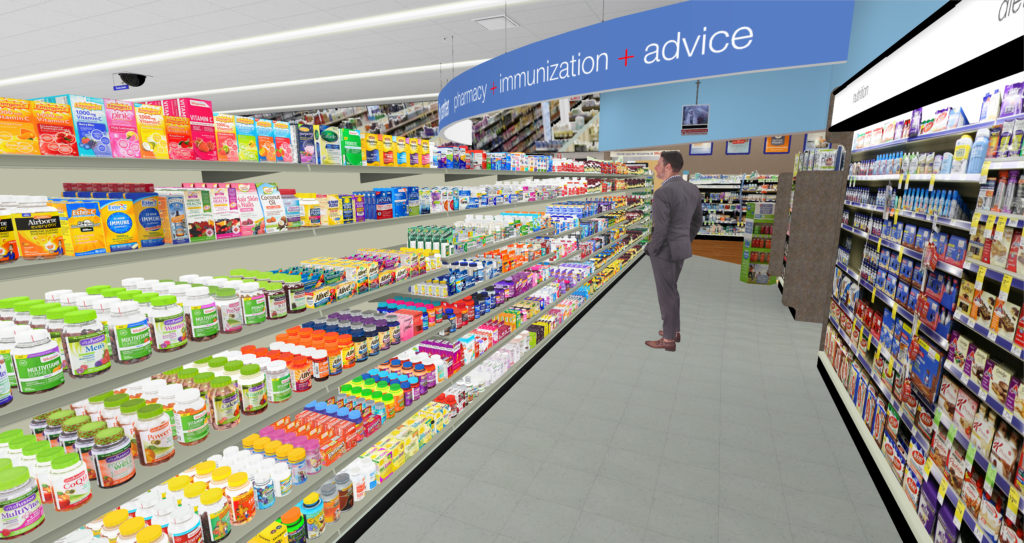Telecom & Technology Consulting

Retailers have always had to be inventive. From the adoption of neon signs to shopping carts to electronic cash registers, remaining competitive means keeping up with the times. Tastes change, shopping habits shift, and cultural forces dictate new offerings. Stores must continually adapt.
But the need for innovation has magnified since the dawn of the World Wide Web and ecommerce. There’s now an exponential amount of competition from both emerging players and online-only entrepreneurs. There are ever-shifting consumer trends driven by social media. New tech platforms have literally changed how people make purchasing decisions.
This is why retailers are bringing elements of the brick and mortar shopping experience into the digital space. They’re experimenting with what consumers might enjoy, as well as with what may increase sales. One experiment that’s gaining more traction is the virtual store. At the root, it’s an attempt to infuse the spontaneous joy and excitement of real world shopping with the convenience of ecommerce.
Many retail heavyweights are testing out the virtual store concept. For example, J.Crew launched a virtual beach house store, where consumers “walk” through multiple rooms of beach-related attire. In this way, the company can offer the metaverse experience without having to pay for expensive headgear.
Other major retailers embracing virtual storefronts include American Girl, Elizabeth Arden, Dior, Ralph Lauren, Coach, Mattel, and Maybelline.
Beyond accommodating consumer demand, virtual stores also help retailers to do a bit of market research. They can then anticipate what types of experiences will be successful down the line.
Retail testing exploded during the pandemic. Brands tried out fresh online shopping concepts such as virtual styling and live shopping. Yet once people began to leave their homes and feel safe in public, they began to go back to physical stores. As such, some COVID-era retail experiments never gained traction. And with the decrease in online sales, retailers sought ways to reinvigorate the ecommerce experience.
That’s the key idea here when thinking about virtual stores – “reinvigorate.” Virtual stores inject a sense of discovery that can’t necessarily be duplicated in the static online world. Shopping becomes more fun, in part because it becomes more memorable. That aspect of the virtual store is retail gold – positive emotional experiences tend to lead to bigger spends per consumer and long-term loyalty.
While the benefits of virtual stores may appear to be subjective, they foster a more accurate way to measure consumer behavior than what occurs in physical shops. Retailers can know what items individual consumers place in their carts. They know what they put back on the shelf. They know which brands they swapped for different brands – all based on how consumers “walk” through the virtual store. In turn, retailers can hone in on a higher degree of personalized targeting.
The challenge, of course, is how to know if virtual stores will merely be a trend like many other digital experiences. Will consumers make virtual stores part of their regular shopping routines, or will they become yet another digital novelty that fades away next quarter?
A certain segment may ultimately prefer ecommerce convenience to the leisurely virtual store experience. Leaders must also consider the extra costs and development time required to build a dynamic virtual store.
For virtual stores to hook consumers and inspire them to return, they must have world-class design and user experience elements. The whole investment can fail if these stores resemble – or appear to resemble – a traditional ecommerce site. Flat out, virtual stores must offer a completely original experience or consumers will never see the point.
These potential roadblocks should be viewed as opportunities for retailers. Opportunities to extend the brand, the message, and most crucially, the customer base. Today’s consumers are no longer satisfied with the status quo. As much as they expect competitive pricing, free shipping, and responsive customer service, they also want to do business with forward-thinking companies. Virtual stores offer another avenue for retailers to proudly fly the innovation flag.
As we mentioned, it’s still early in the game – time will tell if virtual stores have commercial staying power. Yet retailers should look to history and understand the danger of remaining comfortable and doing things the way they’ve always been done. Virtual stores could be an evolutionary step in retail success.